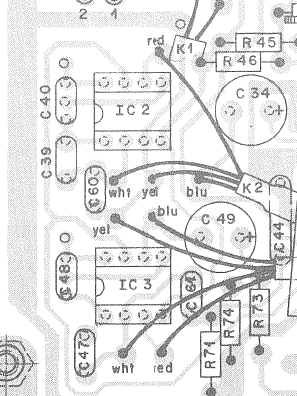Dualflip said:
Hello ppl, i have a studer 169 module and i've heard a lot of ppl upgrading the opamps on this ones
Hi Dualflip,
where do you've heard that?
I'm asking because I'm curious about the details of this substitution..
I've asked here some months ago the same exact question:
Studer 269 - worth replacing LM301s?
After that, I've started to fully recap the 269 I have.
I am so happy with the sound, now, that I've stopped with the opamp replacement issue.
Btw, the 301 opamps in these consoles, in the input and summing sections [I am not talking about the "treble-bass/presence" eq and master limiter sections],
have their internal input stages replaced by transistors [see pins 1-2-3], as Samuel Groner pointed out in the thread linked above,
so swapping these may become tricky.
Studer 169-269 input/summing no-input opamps
[pag 1 input module, pag 2 master module]
And here are the complete schematics of input and master modules:
Studer 169-269 input/summing complete schematics
[pag 1 input module, pag 2 master module]
So, for the eq and limiter stages, the interesting thing is that all the 301s are socketed, the bad news is that you must at least remove some caps, if I've well understood
[or maybe bending the compensation pins of the new opamps].
P.S. These Studers are also fantastic for their hackability..
I've just a stupid project of using the 3 signalling banana outs of each channel for feeding a nice tape Studer meterbridge I have, made of 16 Modutec VU-meters.
